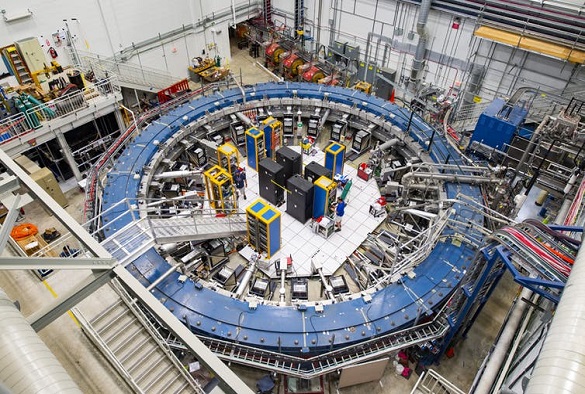
The muon experiment at Fermilab
This article by Professor Themis Bowcock , from the University of Liverpool'Fermilabs Department of Physics and Professor Mark Lancaster at the University of Manchester was first published by The Conversation.
Themis Bowcock, University of Liverpool and Mark Lancaster, University of Manchester
Seven years ago, a huge magnet was transported over 3,200 miles (5,150km) across land and sea, in the hope of studying a subatomic particle called a muon.
Muons are closely related to electrons, which orbit every atom and form the building blocks of matter. The electron and muon both have properties precisely predicted by our current best scientific theory describing the subatomic, quantum world, the standard model of particle physics.
A whole generation of scientists have dedicated themselves to measuring these properties in exquisite detail. In 2001, an experiment hinted that one property of the muon was not exactly as the standard model predicted, but new studies were needed to confirm. Physicists moved part of the experiment to a new accelerator, at Fermilab, and started taking more data.
A new measurement has now confirmed the initial result. This means new particles or forces may exist that aren't accounted for in the standard model. If this is the case, the laws of physics will have to be revised and no one knows where that may lead.
This latest result comes from an international collaboration, of which we are both a part. Our team has been using particle accelerators to measure a property called the magnetic moment of the muon.
Each muon behaves like a tiny bar magnet when exposed to a magnetic field, an effect called the magnetic moment. Muons also have an intrinsic property called "spin", and the relation between the spin and the magnetic moment of the muon is known as the g-factor. The "g" of the electron and muon is predicted to be two, so g minus two (g-2) should be measured to be zero. This is what's we're testing at Fermilab.
For these tests, scientists have used accelerators, the same kind of technology Cern uses at the LHC. The Fermilab accelerator produces muons in very large quantities and measures, very precisely, how they interact with a magnetic field.






